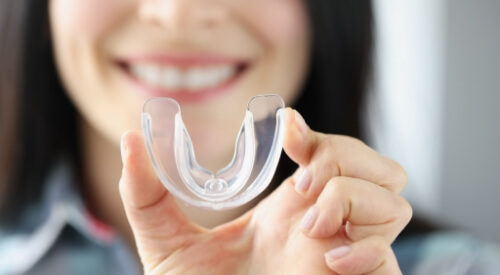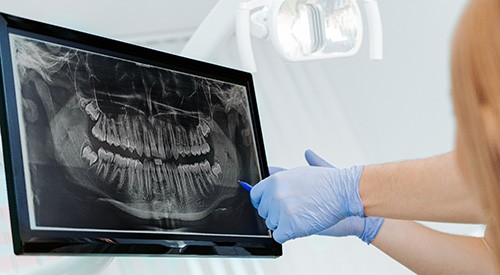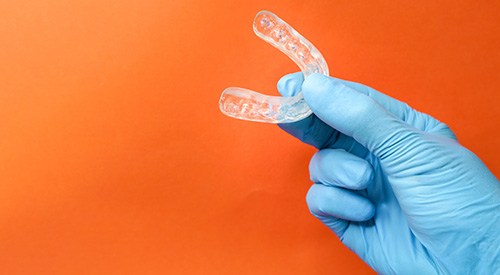TMJ Treatment— Santa Fe, NM
Safe and Effective Relief for TMJ Disorder Pain

Your temporomandibular (TMJ) joints connect your jaw to your skull bone, enabling it to move so you can eat, speak, and smile. Unfortunately, sometimes these small, delicate joints can become damaged or strained, causing severe discomfort and restricted mobility. If you are suffering from pain or stiffness in your temporomandibular joints, contact Dr. Zhang as soon as possible. He can evaluate your jaw and provide you with more information about your treatment options in Santa Fe. The sooner you contact our dental team the sooner we can help deliver the relief you need.
Why Choose Juniper Dental for TMJ Treatment?
- Advanced dental technology for accurate diagnosis and treatment
- Lasting solutions for TMJ pain
- Dentist experienced in the diagnosis and treatment of TMJ disorders
What is TMJ Disorder?

TMJ disorder (or TMJ dysfunction) is a painful condition that affects the temporomandibular joints, muscles and connective tissues surrounding the jaw. These all help you open and close your mouth to chew, speak, laugh, and sneeze.
The temporomandibular joints connect your mandible (lower jaw) to the maxilla (upper jaw). When these joints become overworked due to issues such as bite problems, past oral trauma, or bruxism (teeth grinding) and sustain any additional tension and force, it can cause chronic pain and discomfort.
Symptoms of TMJ Disorder

There are several symptoms of TMJ disorders that patients may experience. These can include:
- Jaw pain and tenderness
- Lockjaw
- Clicking and popping in the jaw when you open and close your mouth
- Earaches or ringing in the ear (tinnitus)
- Neck and back pain
- Pain or difficulty when chewing
- Pain behind the eyes
- Limited mouth movement
- Changes in bite
Types of TMJ Treatment

Accurately diagnosing a temporomandibular joint disorder is the first step in repairing the damage caused by this condition. Dr. Zhang will examine the jaw for signs of TMJ disorder at your regular, biannual dental examination and cleaning appointments, but if you notice any symptoms in between visits, please notify us as soon as possible. A more detailed exam may be necessary, including a physical examination of the jaw and a CT/cone beam scan. Once he has a better understanding of the condition of your jaw, Dr. Zhang will provide recommendations for solutions for your jaw pain based on your unique needs. Because there are many possible reasons you may have a temporomandibular joint disorder, the prescribed therapy will depend on the root cause.
Occlusal Splint

Occlusal splints are oral appliances that can help protect your teeth from grinding. This can worsen TMJ disorder symptoms and thus should be treated to prevent them from causing further discomfort. Occlusal splints help shift the jaw slightly forward, helping take some of the pressure of the TMJ joints and allowing them to rest comfortably. This often provides long-term relief from tenderness and pain.
Equilibration/Occlusal Adjustment

Bite problems can be a common cause of TMJ disorder. They can sometimes occur when dental restorations or dental work aren’t properly cemented into the mouth, causing an uneven distribution or force of the temporomandibular joints.
Occlusal adjustment involves calculating your bite and buffing down certain restorations or fillings that could be causing an uneven biteforce. This often helps the facial muscles and connective tissues relax, alleviating TMJ pain and strain.
